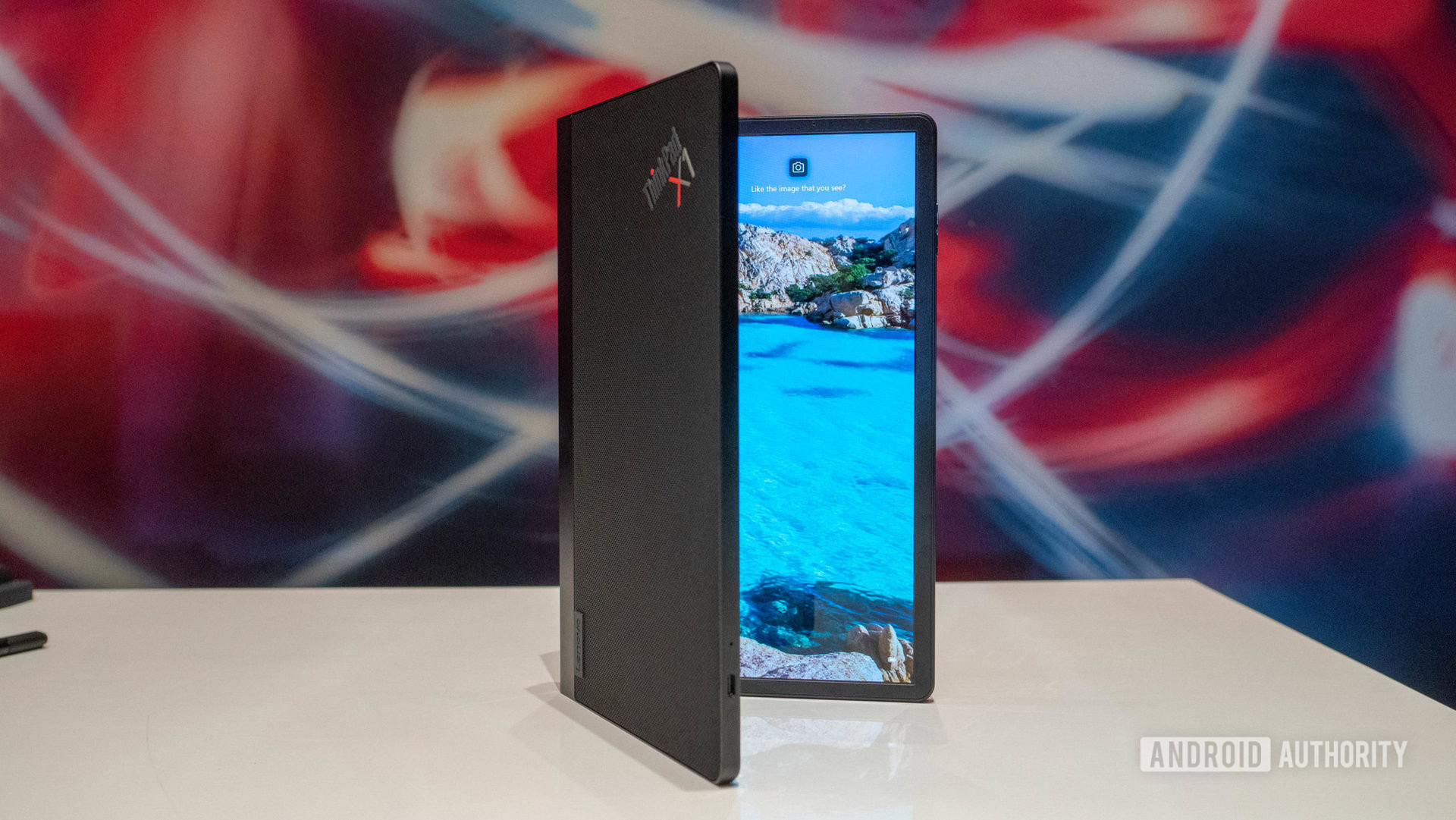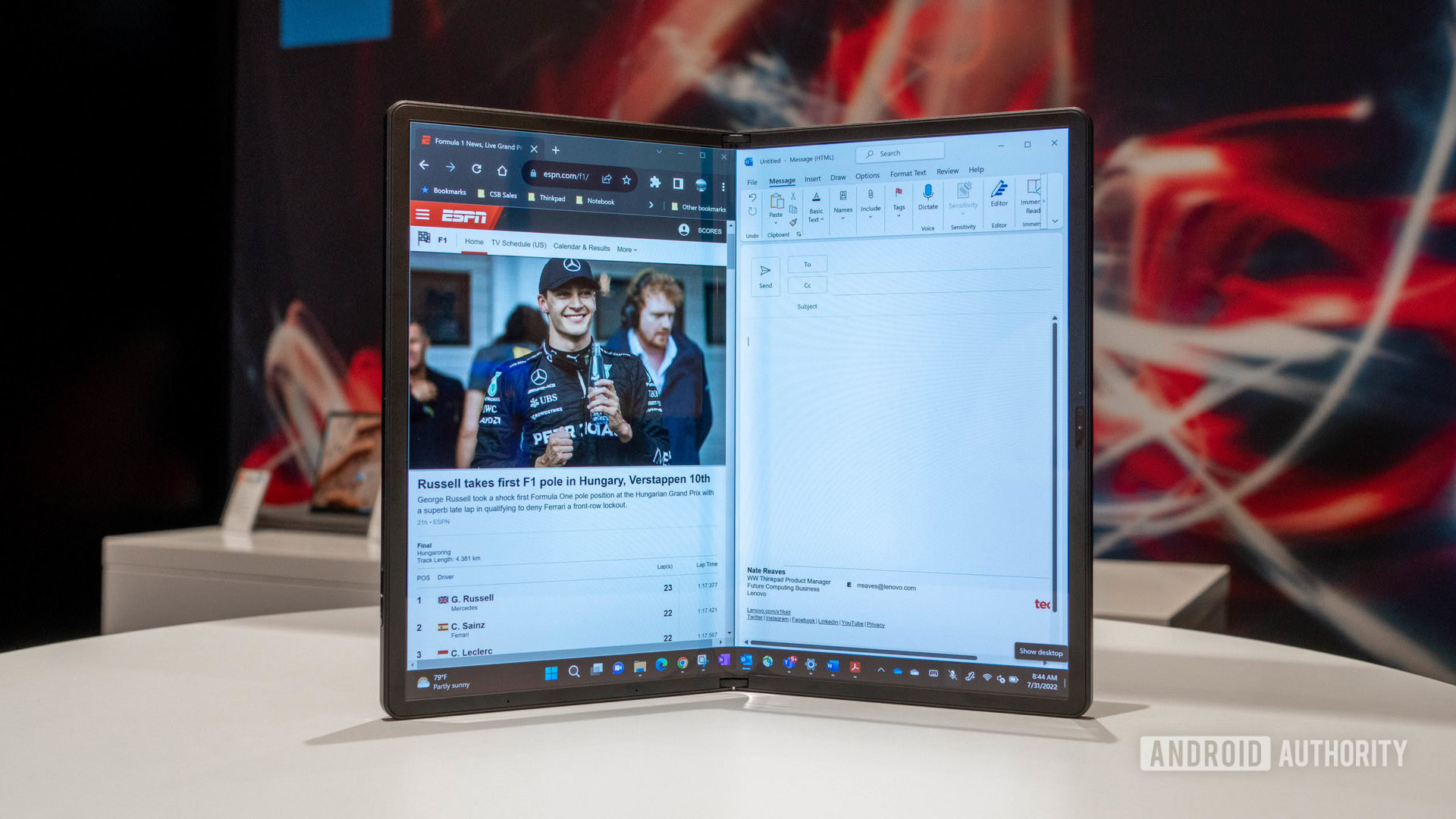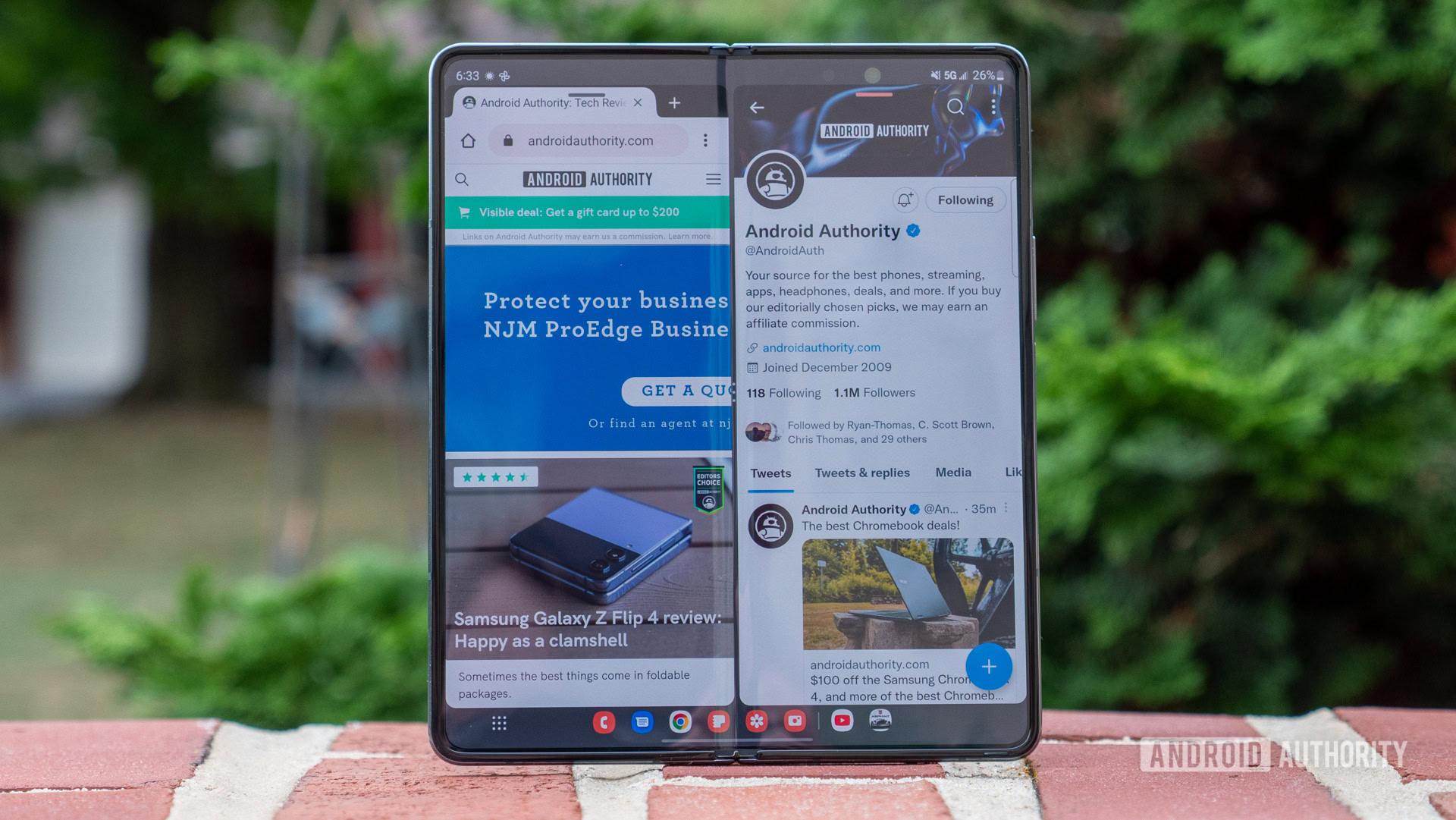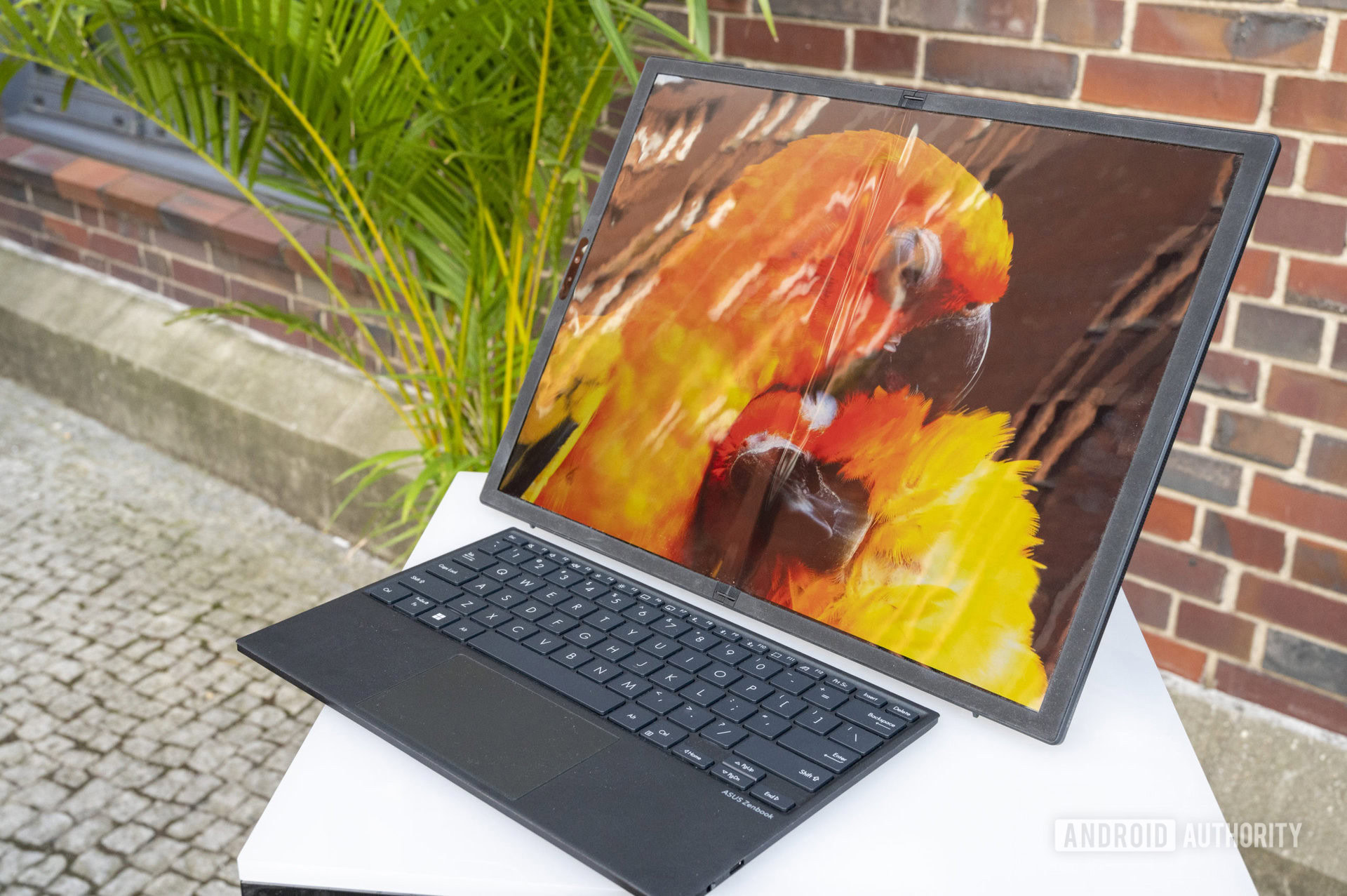Affiliate links on Android Authority may earn us a commission. Learn more.
IFA has convinced me: Foldable laptops make more sense than foldable phones
September 4, 2022

I am at IFA 2022 this weekend, my first real-life event since the before times. Wondering the labyrinthine halls of the Messe convention center, it’s pretty obvious that everyone’s still a bit out of it. That includes bleary-eyed journalists, but the general lack of focus was more visible in the list of products that debuted at the show. It was kind of a snooze-fest, with one notable exception: foldable-screen laptops.
After checking out the first two foldable laptops on the market, I am convinced: Foldable laptops make more sense than foldable phones. Here’s why you should keep an eye on this new product category.
Also read: The new and improved Matebook X Pro fixes HUAWEI’s silliest laptop problem
The road-openers

Laptop makers are known for their propensity for running experiments — surviving in a cutthroat, mature industry mandates it. Most of the experiments fail though, so when I saw the first foldable-screen laptop, the 2019 Lenovo X1 Fold, I wasn’t impressed. It seemed like a weak attempt to capitalize on the foldables hype, destined to be forgotten within a year.
Three years later, the X1 Fold is still around and way better than before. Lenovo made it bigger and gave it a less-cramped physical keyboard. The bezels are tighter, the specs are bumped up, and the product feels much less prototype-y than before.
Read more: Lenovo X1 Fold (2022) hands-on: The foldable laptop with flex
Lenovo was first out of the gate with foldable laptops, but ASUS was close behind. The Taiwanese giant unveiled its own take on the concept at CES 2022 and revealed full details at IFA this week. The Zenbook 17 Foldable is very similar to the Lenovo, but it’s bigger, at 17 inches. It feels a bit less refined, but that’s to be expected from a first-gen entry in a brand new form factor.
Read more: ASUS Zenbook 17 Fold OLED hands-on: There’s real potential here
What’s so good about foldable laptops?
The ability to turn a 16-inch or 17-inch tablet into something that resembles the netbooks of the pre-iPad era is the obvious selling point. The Lenovo X1 Fold and the Zenbook 17 Fold can be used as external monitors (or, more accurately, All-in-One PCs), as large tablets, as dual-screen media consumption machines, or as compact 13-inch laptops.
The most compelling way to use them is the first mode I mentioned: portable All-in-One’s that you prop on a flat surface and use in conjunction with the bundled wireless keyboards. In this mode, you get the productivity benefits of a 16/17-inch screen in the 4:3 aspect ratio. The last bit is important. A 4:3 17-inch screen has a bigger surface area than a 16:9 17-inch screen, so it gives you more room for your content. Given that most people opting for foldable-screen laptops will be productive users, that already puts them ahead of conventional laptops. You just can’t get a traditional 17-inch laptop in 4:3, it would simply be too big. Foldable screens solve that problem.
In a few seconds, you get a 12-inch or 13-inch screen coupled with a fully practical keyboard.
When you need to be on the move, it’s super simple to turn your roomy 4:3 screen into something portable. In a few seconds, you get a 12-inch or 13-inch screen coupled with a fully practical keyboard. Sure, it’s a thick package, but not inconveniently so. Windows detects the new format and deactivates the part of the screen you don’t see. You’re ready to go.
Foldable laptops vs foldable phones
Thanks to Samsung’s leadership in foldable screen technology, foldable phones had a head start compared to laptops. But I argue that foldable phones have led us on the wrong path — or at least the less interesting one.
Don’t get me wrong — foldables like the Galaxy Z Fold 4 or Z Flip 4 are great. In their current iteration, they are refined, mature products that regular consumers can buy in full confidence. But all foldable phones do is make an already small device, well, smaller.

On the Galaxy Z Flip 4 or the HUAWEI P50 Pocket, the practical benefits of folding the device are minimal. What you gain by decreasing the length of the product, you mostly lose due to the increased thickness. The Z Fold or Mate X lines are better in this regard, as you can actually use them in their folded form. And when you unfold them, you can do more on them, thanks to the bigger screen. Laptops are similar, but you get way more extra screen real estate, and by extension more utility. And that’s the gist of my argument.
By virtue of being bigger, foldable-screen laptops offer a bigger usability/productivity boost than a phone could ever do.
By virtue of being bigger, foldable-screen laptops offer a bigger usability/productivity boost than a phone could ever do. Sure, Google and phone makers have tried to make the most of the extra space with Android 12L and new software features. But there’s only so much you can do with a few square inches of display. On the flipside, Microsoft definitely needs to do a better job supporting foldable laptops in Windows. Even so, the productivity bump is more meaningful on a 17-inch screen.
Foldable-screen laptops can still fail

You could bring up a lot of arguments against foldable-screen laptops. In fact, we did. They are a step back in terms of durability, reparability, and upgradability, and at least right now, they are extremely expensive. The Lenovo X1 Fold costs $2,500, while the ASUS Zenbook 17 Fold starts from $3,500. You could also argue they solve a problem that doesn’t exist. Traditional laptops are already very compact, and you can be quite productive on them.
One of the biggest issues that could hold foldable laptops back is ergonomics. The small kickstand on the Zenbook 17 Fold, for instance, doesn’t inspire confidence. If you can only use the big screen on a flat steady surface, that will greatly limit its potential. So there’s work to be done there.
Do you see the potential of foldable-screen laptops?
I’m optimistic
Foldable laptops are just becoming a thing, and quite timidly at that. But I see their potential, and to me, they could be more impactful than the (over-)hyped foldable phones. A folding laptop is more useful than a folding phone, and that’s not going to change unless Samsung somehow figures out a way to fit a laptop-class screen on a smartphone-sized device. That’s still a possibility, mind you. There are patents out there for all kinds of crazy folding designs, but I’ll believe it when I see it.
The foldable laptops of today are unrefined, unfocused, and expensive. I wouldn’t recommend that you buy them. But thanks to their inherent productivity-boosting advantage over phones, they could turn out to be a more successful form factor in the long term.